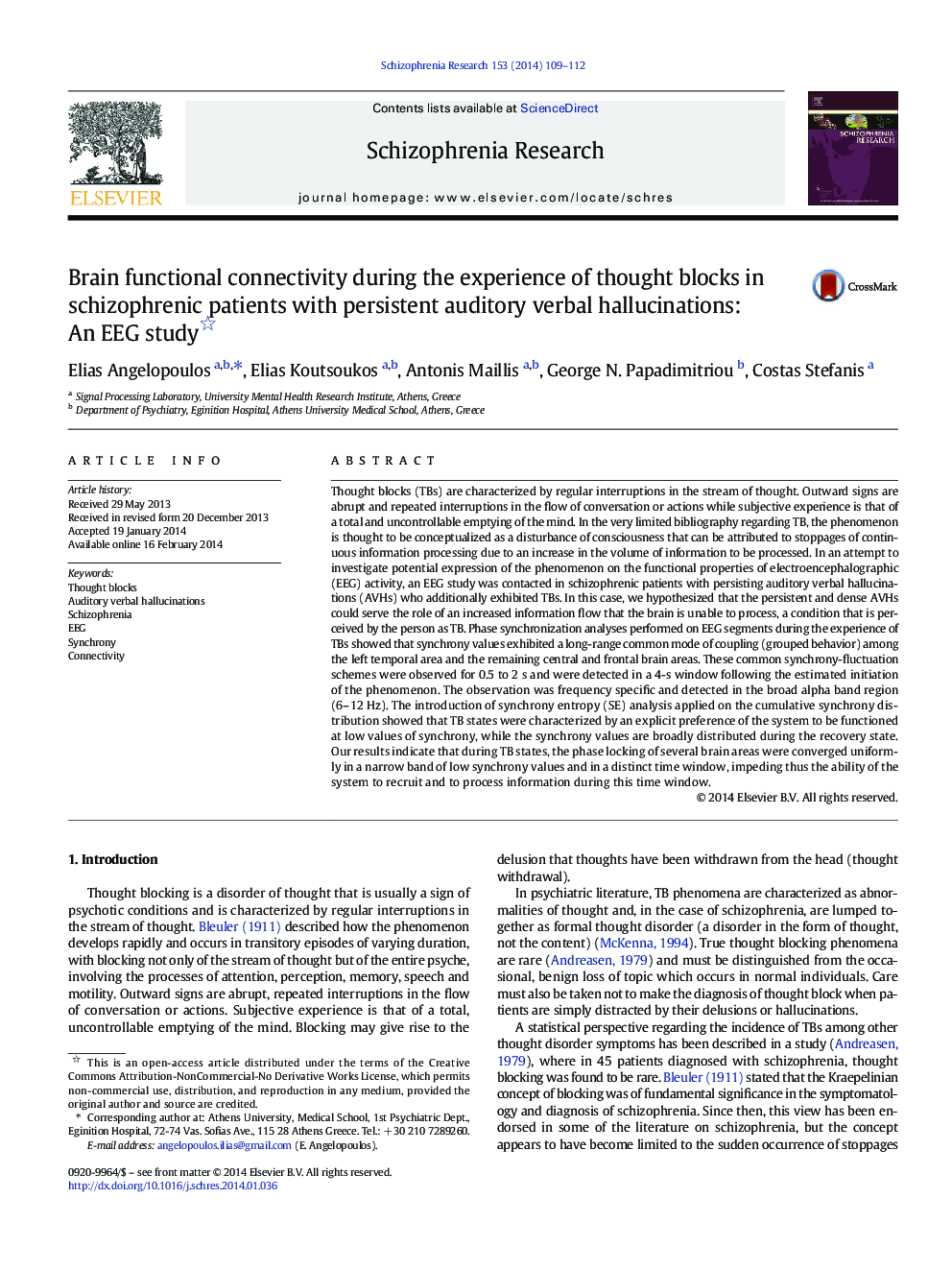| کد مقاله | کد نشریه | سال انتشار | مقاله انگلیسی | نسخه تمام متن |
|---|---|---|---|---|
| 6825514 | 548036 | 2014 | 4 صفحه PDF | دانلود رایگان |
عنوان انگلیسی مقاله ISI
Brain functional connectivity during the experience of thought blocks in schizophrenic patients with persistent auditory verbal hallucinations: An EEG study
دانلود مقاله + سفارش ترجمه
دانلود مقاله ISI انگلیسی
رایگان برای ایرانیان
کلمات کلیدی
موضوعات مرتبط
علوم زیستی و بیوفناوری
علم عصب شناسی
علوم اعصاب رفتاری
پیش نمایش صفحه اول مقاله

چکیده انگلیسی
Thought blocks (TBs) are characterized by regular interruptions in the stream of thought. Outward signs are abrupt and repeated interruptions in the flow of conversation or actions while subjective experience is that of a total and uncontrollable emptying of the mind. In the very limited bibliography regarding TB, the phenomenon is thought to be conceptualized as a disturbance of consciousness that can be attributed to stoppages of continuous information processing due to an increase in the volume of information to be processed. In an attempt to investigate potential expression of the phenomenon on the functional properties of electroencephalographic (EEG) activity, an EEG study was contacted in schizophrenic patients with persisting auditory verbal hallucinations (AVHs) who additionally exhibited TBs. In this case, we hypothesized that the persistent and dense AVHs could serve the role of an increased information flow that the brain is unable to process, a condition that is perceived by the person as TB. Phase synchronization analyses performed on EEG segments during the experience of TBs showed that synchrony values exhibited a long-range common mode of coupling (grouped behavior) among the left temporal area and the remaining central and frontal brain areas. These common synchrony-fluctuation schemes were observed for 0.5 to 2Â s and were detected in a 4-s window following the estimated initiation of the phenomenon. The observation was frequency specific and detected in the broad alpha band region (6-12Â Hz). The introduction of synchrony entropy (SE) analysis applied on the cumulative synchrony distribution showed that TB states were characterized by an explicit preference of the system to be functioned at low values of synchrony, while the synchrony values are broadly distributed during the recovery state. Our results indicate that during TB states, the phase locking of several brain areas were converged uniformly in a narrow band of low synchrony values and in a distinct time window, impeding thus the ability of the system to recruit and to process information during this time window.
ناشر
Database: Elsevier - ScienceDirect (ساینس دایرکت)
Journal: Schizophrenia Research - Volume 153, Issues 1â3, March 2014, Pages 109-112
Journal: Schizophrenia Research - Volume 153, Issues 1â3, March 2014, Pages 109-112
نویسندگان
Elias Angelopoulos, Elias Koutsoukos, Antonis Maillis, George N. Papadimitriou, Costas Stefanis,